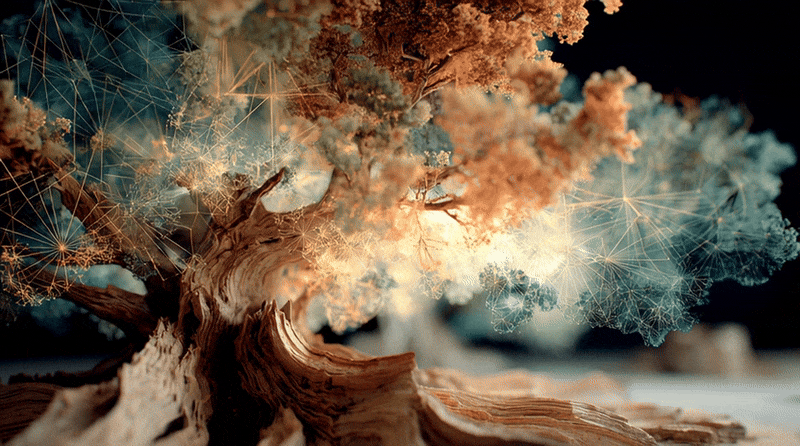Beyond Intent: Engineering the Business Case for Regenerative Design.
Naturemimétique.ai provides the theoretical strategic foresight and execution roadmap necessary to integrate biological efficiency into industrial processes. We help R&D leaders, C-suite executives, and investors de-risk investment in bio-materials by exploring the systemic challenges of inconsistency, CapEx, and supply chain fragility. Our work translates nature’s proven logic into potentially quantifiable ROI.
Legal Disclaimer: Not Legal/Financial/Engineering Advice. This content is for educational and informational purposes only. No Client Relationship: Reading this blog does not establish an advisory or client relationship. Document reference.
Please ensure you read our full Terms of Service & Advisory Disclaimer.

Executive Pitch:
Head of Design/Innovation Leadership
I bring proven executive leadership to the challenge of closing the gap between biological breakthrough and scalable commercial reality. My experience as Head of Design in technology has focused on implementing complex, self-optimizing systems, which aligns perfectly with Naturemimétique’s mandate to translate Nature’s 3.8 billion years of R&D into operational efficiency.
Specifically, I apply principles of user experience (UX) to industrial systems, viewing the manufacturing process itself as a high-stakes user journey that must be optimized for clarity, speed, and zero friction.
My focus is to evolve design leadership beyond inspiration and aesthetics, delivering the rigor of engineering required to make bio-materials reliable and profitable.
The Mimétique Code: My Implementation Strategy
I specialize in integrating the principles of the Mimétique Code—translating Biological principles to design engineering—across three core, high-leverage areas:
1. Process Engineering & System Experience Design (the System Flow)
My leadership focuses on implementing the Systemic Redesign for Scale and Efficiency. I deliver the execution roadmap to move your manufacturing from batch production to self-correcting, continuous systems. This transformation is achieved through Operational Experience Design— I design the factory floor for ‘zero friction,’ identifying and eliminating the systemic bottlenecks and user errors that lead to inconsistency. This approach is engineered to eliminate batch inconsistency, waste, and manual QC through the implementation of technologies like real-time AI-driven density scanning.
2. Strategic Benchmarks & Quantifiable ROI
I provide the financial translation necessary for C-suite executives and investors. My work is not based on intuition, but on data that quantifies risk and reward. I integrate the analysis of Strategic Benchmarks (Market Data, Cost Drivers) and apply robust Information Architecture to make complex financial and engineering data immediately useful. My goal is to secure objectives like CapEx reduction and build overall supply chain resilience, ensuring that design choices secure long-term quantifiable ROI.
3. Design Excellence, Implementation, & Organizational Scaling
I lead the strategic effort to bridge the scientific breakthrough to luxury-grade, commercially viable, and beautiful final products. As an executive who has created and scaled design organizations from scratch, I provide hands-on leadership in establishing the necessary R&D pipeline and organizational structure. I specialize in designing the full product lifecycle—from initial design research to final commercialization—to ensure the execution of the bio-engineering roadmap delivers validated proof of concept and secures long-term market leadership.

“Evolution is the ultimate efficiency consultant. The cost of a business that ignores its waste streams is the cost of a system that rejects 3.8 billion years of proven resilience.”
Case Study: Mimétique Code Insights: Designing Zero-Energy Filtration Architectures
Strategic Brief: The “Continuous Bio-Factory”
Theoretical Data Hub: Benchmarks
Legal Disclaimer: Not Legal/Financial/Engineering Advice. This content is for educational and informational purposes only. No Client Relationship: Reading this blog does not establish an advisory or client relationship. Document reference.
Please ensure you read our full Terms of Service & Advisory Disclaimer.
FAQs
How does Mimétique differ from simple mimicry or “Green Design”?
Mimétique (Biomimicry) is about exploring the deep functional logic found in nature. We believe the key is moving past simple reduction (Green Design) to actively translating nature’s proven strategies for efficiency, structural consistency, and zero-waste into exciting possibilities for modern systems. It’s about asking big questions and looking for inspiration that guides truly restorative design, rather than just solving the surface aesthetics or reducing harm.
Is the Mimétique Code a proprietary framework?
The Mimétique Code is the conceptual method we use here to analyze biological principles. While the foundational biological principles are public domain (e.g., the structure of the Ganoderma lucidum), the Code is how we structure our analysis and discussion on potential industrial applications, focusing on translating biological principles into conceptual engineering ideas.
How do you ensure material consistency in bio-composites at scale?
Achieving material consistency in bio-composites is one of the biggest challenges—what we call the Consistency Gap. We are deeply interested in the potential of using in-line sensors and Machine Learning models (like Process Analytical Technology) to monitor factors such as fiber density and nutrient uptake in real-time. The idea is that this system could predict structural flaws before they manifest, moving quality assurance from checking a finished product to constantly tuning the process. This concept is vital to closing the Consistency Gap.
Can Mimétique principles be applied to legacy industrial infrastructure?
Absolutely. We believe these principles are designed for system optimization, meaning they can apply to existing infrastructure, not just new construction. The focus is on examining flows—like energy and water—to explore where we can retrofit existing systems. This might involve looking at bio-inspired ideas, such as using filtration membranes inspired by Aquaporin technology, to improve efficiency and potentially increase asset value.
Disclaimer: This content is for informational and educational purposes only and reflects conceptual analysis, not professional engineering or financial advice.